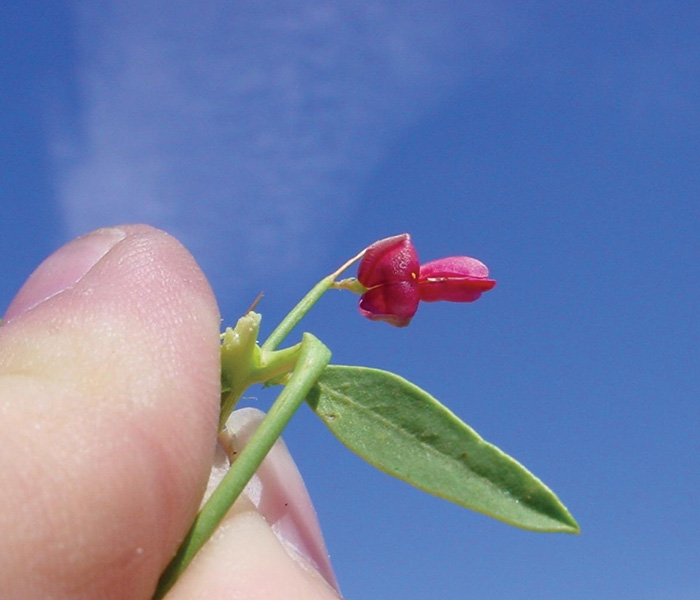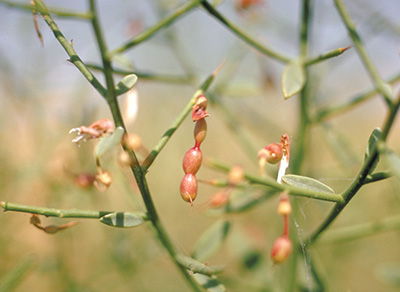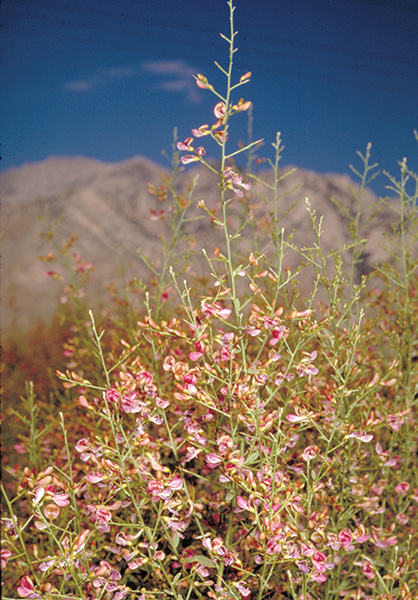Stem
- Highly branched with lengthwise ridges, 1.5-4 ft. tall and lacks hair (glabrous); spines 0.5-1.5 in. long with yellow tips arise from leaf axils
Leaves
- Alternate, simple, narrow to oblong and 0.25-0.75 in. long; hairs on lower surface only
Flower
- Pea-like; 0.3-0.4 in. long with pink to purple petals; 2-8 flowers occur alternately along short, spine-tipped branches
- Seed pods are reddish-brown, 0.5-1.25 in. long, often curved, tipped with a small spine and contain 5-8 seeds; pods are deeply indented between seeds

Camelthorn flower
Root
- Woody, deep, spreading root system; roots often associate with nitrogen-fixing bacteria

Camelthorn pods
Other
- Grows best in areas where it can access additional water during the growing season; often found in field borders, roadsides and along waterways; known to occur in Clark and Humboldt counties
- Perennial; reproduces mostly by roots but sometimes seed

Camelthorn plant
Control
- Hand removal of individual plants (including roots) can limit spread of small infestations; grazing, mechanical removal and burning are NOT effective
- Apply 2,4-D or dicamba post emergence; aminopyralid, imazapr, metsulfuron or picloram pre- or post emergence
Blecker, L., Creech, E., Dick, J., Gephart, S., Hefner, M., Kratsch, H., Moe, A., Schultz, B.
2020,
Nevada Noxious Weed Field Guide – Camelthorn,
Extension, University of Nevada, Reno, Field Guide


